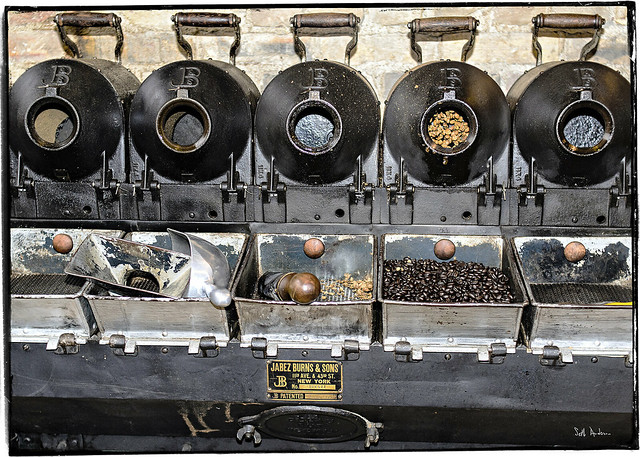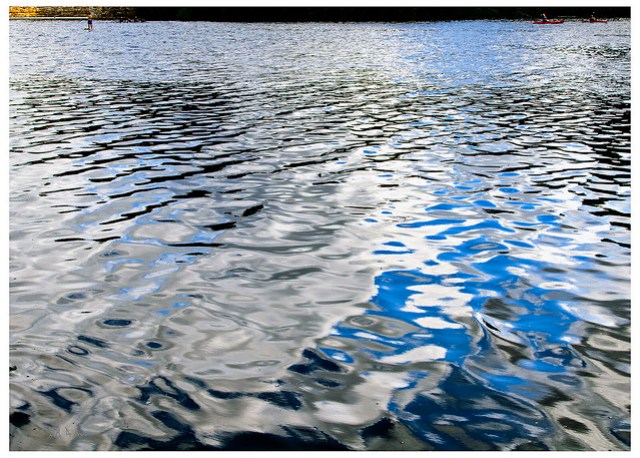
These shelves are overflowing now, btw…
Let us pause a moment to extol the art of clutter. And it isn’t even a Slate Pitch!
Dominique Browning writes:
Entire companies are being built on the backs of a neurosis that makes us believe that the process of shedding is complicated to the point of paralyzing.
It is all pointless and misguided, and it is time to liberate ourselves from the propaganda of divestment.
I would like to submit an entirely different agenda, one that is built on love, cherishing and timelessness. One that acknowledges that in living, we accumulate. We admire. We desire. We love. We collect. We display.
And over the course of a lifetime, we forage, root and rummage around in our stuff, because that is part of what it means to be human. We treasure.
Why on earth would we get rid of our wonderful things?
It is time to celebrate the gentle art of clutter. We live, and we pick up things along the way: the detritus of adventure; the vessels of mealtimes; the books and music of a life of the mind; the pleasures of our daily romps through the senses.
(click here to continue reading Let’s Celebrate the Art of Clutter – NYTimes.com.)
If you’ve ever been in my house, you’ll know that I have things everywhere: piles of books, magazines, newspapers, stacks of compact discs and DVDs, artwork in process of being hung, not to mention the more permanent items already displayed, plus cat toys, file folders for the projects de jure, notebooks full of scribbles and diagrams, shelves of vitamins and herbs, bottles of wine and spirits, both empty and partially full, electronic flotsam and jetsam, and all the little snippets and objects of a life lived. Some might consider it clutter, but we’re ok with it, mostly. We vacuum, dust, and clean at least once a week, so it isn’t that it is dirty and disgusting in here, just not spartan. We are not minimalists, we are maximalists. Sorry, Leo! I love you, cuz, but I’m on the other side of the spectrum…

“Oh, You wanted to *work* at your desk?”
When fashion icons like Iris Apfel agree with me, I’m even more ok with not following the de-clutter trend.
Similarly, people seem to be obsessed with decluttering their homes these days, but you’re known for keeping your house filled with all sorts of treasures. Why? I love clutter. I think being totally minimal shows a lack of history and soul, and I find it sort of pitiful. I think it’s wonderful to have stuff and live with memories and things you enjoy.
(click here to continue reading Iris Apfel Doesn’t Do Normcore – NYTimes.com.)
That is not to say I don’t need to throw out things, and in fact, I do get rid of things on a semi-regular basis. I rarely save magazines after I’ve finished reading them, (digital excerpts an exception of course, as anyone who is on my email list can attest) I donate clothes to Goodwill or elsewhere whenever I stop wearing them. I don’t have problem discarding objects just because I once used them, I only keep a small portion of talismans of my history. I’m only saying I don’t need your advice on what I should keep. And my house will never look like a yoga studio, sleek, spartan and empty.
kthxbai…

Onward Thru The Fog! Oat Willie’s
There is a reason we talk about nesting. Next time you are out walking, take a close look at a nest.
Nests are full of twigs, bits of fluff, string, moss and bark. Stuff birds take home, and fit to a shape that accommodates their lives.
Some birds even press their warm bodies against their stuff as they are making their nests, molding them to the shape of their breasts, so that they feel like … home.
A home that is uniquely theirs, and uniquely beloved.
(click here to continue reading Let’s Celebrate the Art of Clutter – NYTimes.com.)

Nesting





































































